Accelerate Cementation Procedures with Biscem™ Self-Adhesive Resin Cement
In dentistry, we have many choices for our cementation needs. Some cements have been used for many years, spanning decades, whereas others have just recently been created. Many of the older cements relied on mechanical retention (ie, tall axial walls, minimal taper, and excellent fit). The goal with these cements was to fill the void between the tooth and the restoration. When resin cements (also known as adhesive cements) were developed, dentists were able to adhesively bond the tooth to the restoration, creating a single functional unit. Over the past decade, these adhesive cements have become popular but not without confusion and difficulty in use. They require a number of steps to accomplish the cementation procedure, resulting in a long and complex regimen. This tedious protocol has led to the development of a new breed of cement–the self-adhesive resin cement.
Resin cements are modified composites that are used to bond restorations to the prepared teeth. BisCem, a self-adhesive resin cement from Bisco, Inc, accomplishes this task without the need for separate etching, priming, and bonding steps. BisCem meets the dentist’s desire of having an effective material that is quick and easy-to-use.
BisCem is a dual-cured resin cement indicated for use on all crowns, bridges, inlays, onlays, and posts. Strict attention was paid in the development of this product to provide features that address common issues when placing indirect restorations.
FILM THICKNESS
One of the biggest concerns in placing restorations is ensuring that the final restoration is seated properly. The film thickness of the cement used is a critical factor that can interfere with an otherwise perfectly created restoration. BisCem’s film thickness is 22.3 µm, one of the lowest in this class of products.
RADIOPACITY
BisCem meets the ISO requirements as a radiopaque material. It is easily visible on radiographs, which helps to eliminate the guesswork at the time of placement or during future patient visits.
EASY CLEAN-UP
Often times, removing excess cement can be time consuming, difficult, and it can cause additional discomfort to a patient. When using BisCem, removal of excess cement is simple. Once the restoration is seated, light-cure the margins for 2 to 3 seconds. The brief exposure to the curing light will initiate the set, allowing any excess cement to be easily removed with an explorer or scaler. Once the excess is removed, the cement can be fully cured for 20 to 30 seconds at 500 mW/cm2.
SHADE SELECTION
BisCem makes shade selection simple. It comes in two shades: Translucent and Opaque. Although either shade can be used in any situation, Translucent is an excellent choice for placing inlays and onlays to eliminate enhancing any visible margins. Using Opaque can be convenient in aiding with clean-up as it is very visible and you can be assured that all excess cement has been removed.
DELIVERY
BisCem is a paste/paste formula delivered in an auto-mix dual-syringe. This delivery system is convenient for placing the material directly into the restoration while controlling the amount of material extruded. There is no premixing or additional equipment or accessories required.
See Figure 1; Figure 2; Figure 3; Figure 4; Figure 5; Figure 6;
CONCLUSION
BisCem is an effective and simple alternative for the cementation of indirect restorations. It offers extraordinary handling properties, is fluoride-releasing, radiopaque, and provides an excellent bond to dental materials.
This article was written by Rolando Nuñez, DDS, MS.
For More Information
Bisco Dental Products
Phone: 1-800-247-3368
Web: www.bisco.com
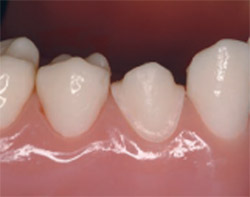 | 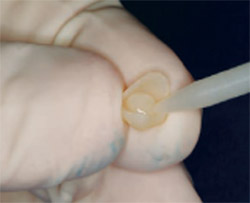 | |
| Figure 1 Remove temporary restoration and residual cement. | Figure 2 Fill restoration with BisCem. | |
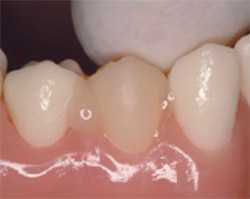 | 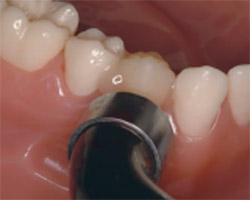 | |
| Figure 3 Seat the restoration. | Figure 4 Light-cure for 3 to 5 seconds to aid in cement removal. | |
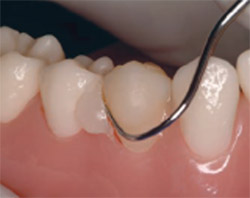 | 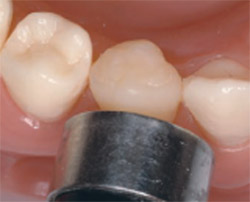 | |
| Figure 5 Excess cement is easily removed. | Figure 6 Light-cure for 20 to 30 seconds. | |
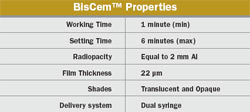 |



